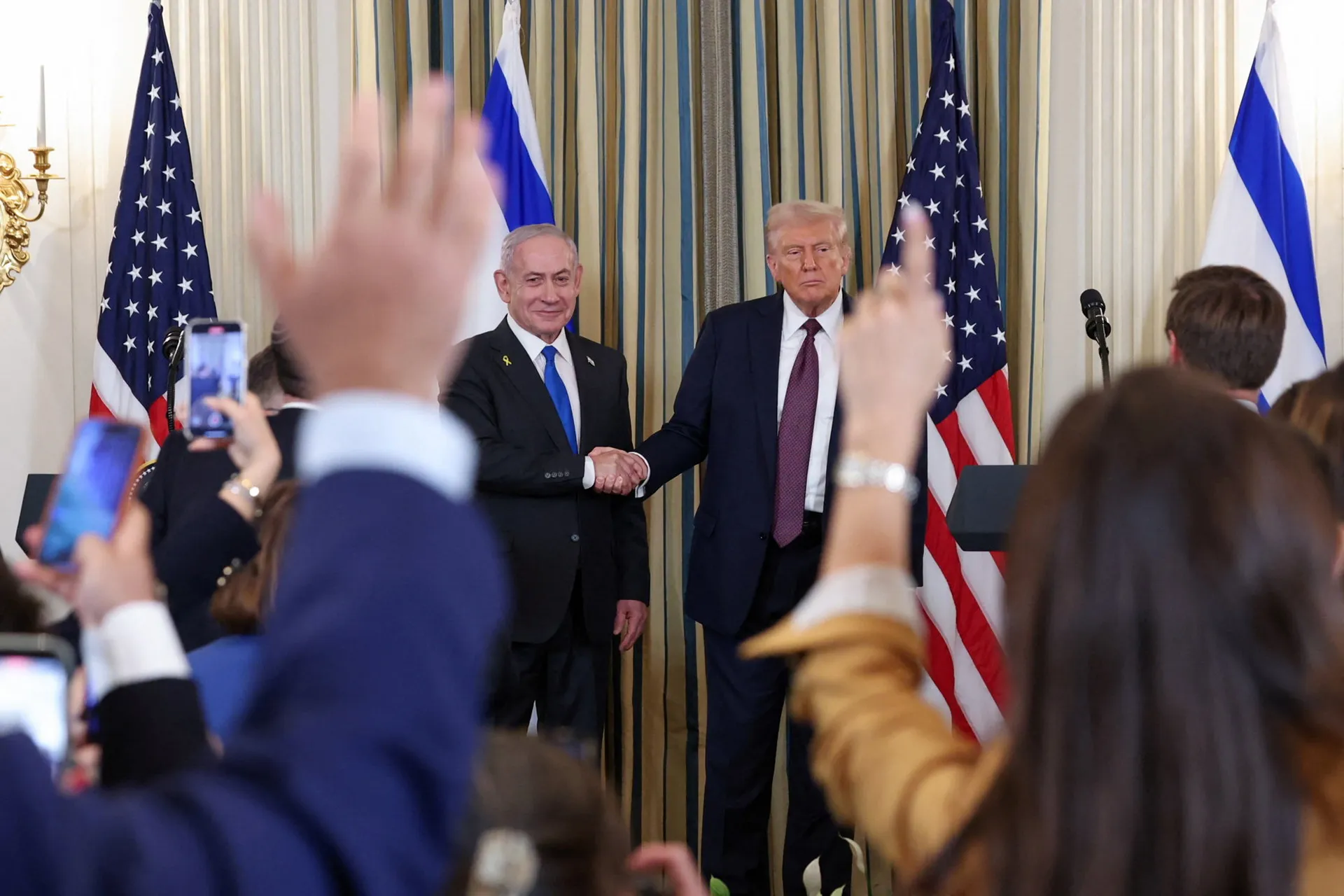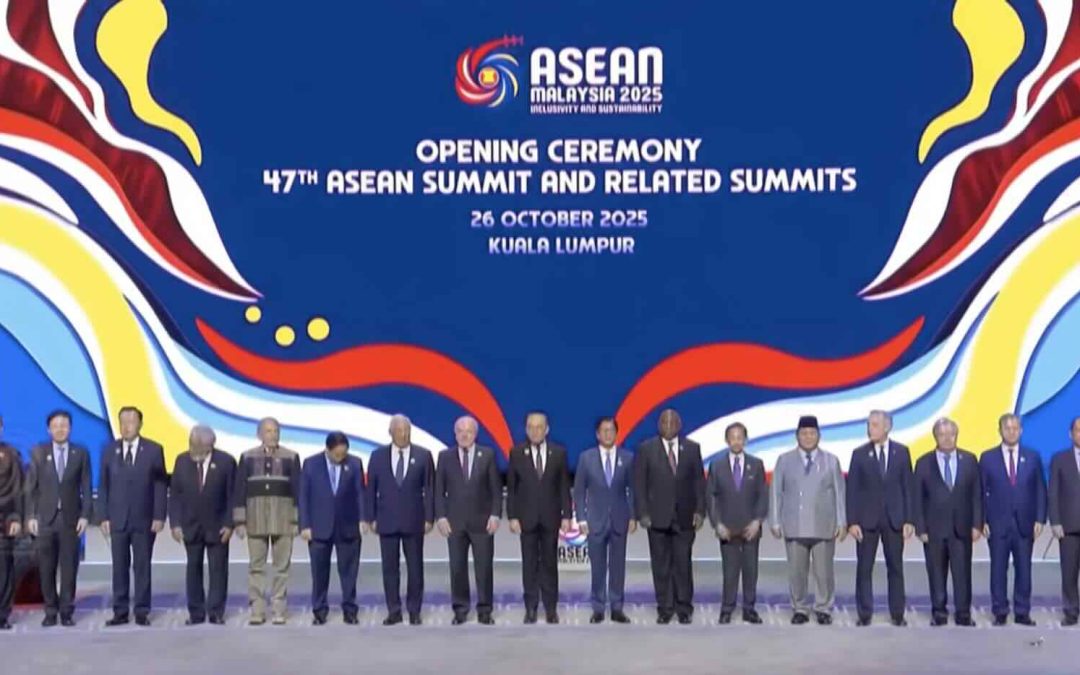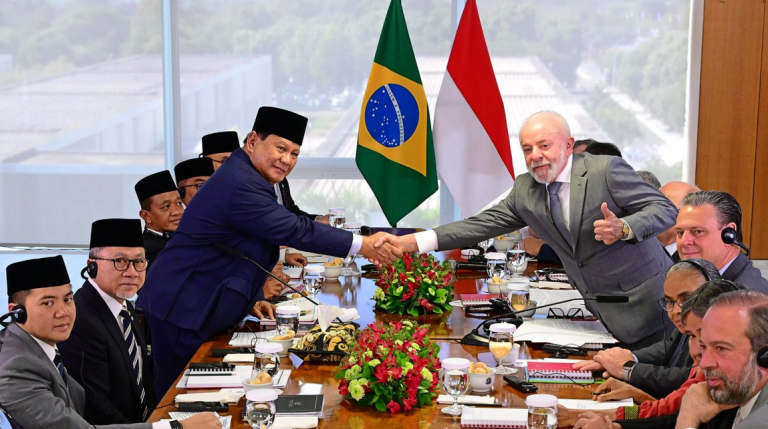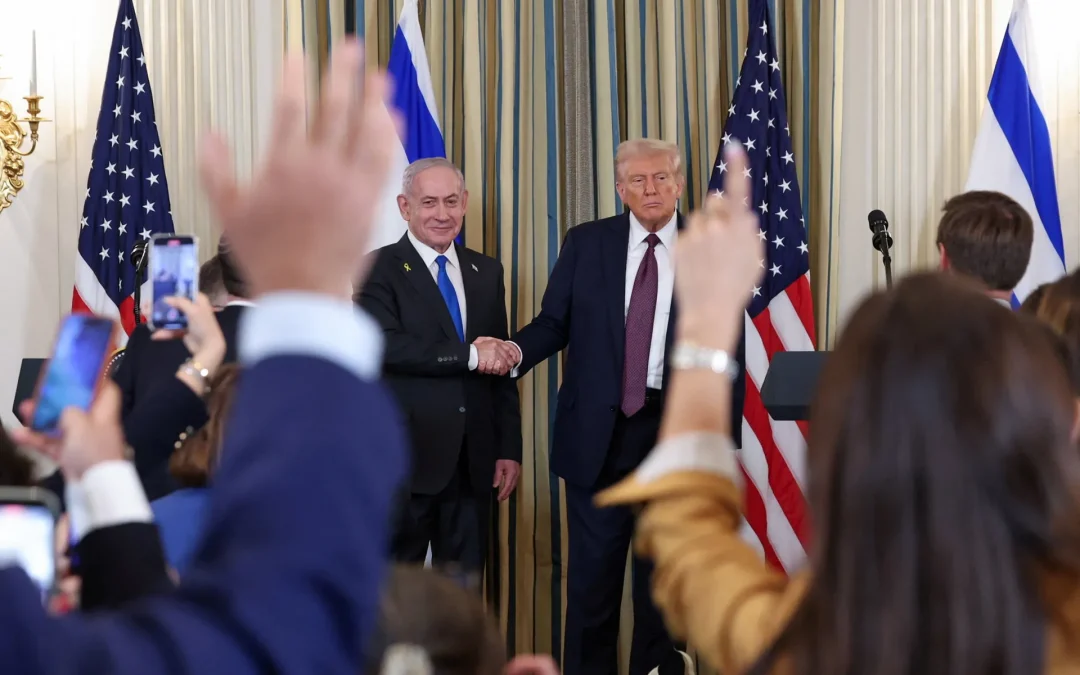The wait for Hamas’ response to the US-Israeli-approved peace plan is growing tense as negotiators prepare to meet in Egypt on October 7, which also marks the second anniversary of Hamas’ fateful attack that triggered the ongoing war.
In a diplomatic reception held at the White House on September 29, US President Donald Trump shared his plan to end Israel’s war on Gaza, earning an acceptance from Israeli Prime Minister Benjamin Netanyahu.
President Trump’s peace plan: a quick glance on the 20 points of measures to end Gaza conflict
Published through the official White House Rapid Response’s X account, the peace plan was referred to as “President Donald J. Trump’s Comprehensive Plan to End the Gaza Conflict” as shown below:
1. Gaza will be a deradicalized terror-free zone that does not pose a threat to its neighbors.
2. Gaza will be redeveloped for the benefit of the people of Gaza, who have suffered more than enough.
3. If both sides agree to this proposal, the war will immediately end. Israeli forces will withdraw to the agreed upon line to prepare for a hostage release. During this time, all military operations, including aerial and artillery bombardment, will be suspended, and battle lines will remain frozen until conditions are met for the complete staged withdrawal.
4. Within 72 hours of Israel publicly accepting this agreement, all hostages, alive and deceased, will be returned.
5. Once all hostages are released, Israel will release 250 life sentence prisoners plus 1700 Gazans who were detained after October 7th 2023, including all women and children detained in that context. For every Israeli hostage whose remains are released, Israel will release the remains of 15 deceased Gazans.
6. Once all hostages are returned, Hamas members who commit to peaceful co-existence and to decommission their weapons will be given amnesty. Members of Hamas who wish to leave Gaza will be provided safe passage to receiving countries.
7. Upon acceptance of this agreement, full aid will be immediately sent into the Gaza Strip. At a minimum, aid quantities will be consistent with what was included in the January 19, 2025, agreement regarding humanitarian aid, including rehabilitation of infrastructure (water, electricity, sewage), rehabilitation of hospitals and bakeries, and entry of necessary equipment to remove rubble and open roads.
8. Entry of distribution and aid in the Gaza Strip will proceed without interference from the two parties through the United Nations and its agencies, and the Red Crescent, in addition to other international institutions not associated in any manner with either party. Opening the Rafah crossing in both directions will be subject to the same mechanism implemented under the January 19, 2025 agreement.
9. Gaza will be governed under the temporary transitional governance of a technocratic, apolitical Palestinian committee, responsible for delivering the day-to-day running of public services and municipalities for the people in Gaza. This committee will be made up of qualified Palestinians and international experts, with oversight and supervision by a new international transitional body, the “Board of Peace,” which will be headed and chaired by President Donald J. Trump, with other members and heads of State to be announced, including Former Prime Minister Tony Blair. This body will set the framework and handle the funding for the redevelopment of Gaza until such time as the Palestinian Authority has completed its reform program, as outlined in various proposals, including President Trump’s peace plan in 2020 and the Saudi-French proposal, and can securely and effectively take back control of Gaza. This body will call on best international standards to create modern and efficient governance that serves the people of Gaza and is conducive to attracting investment.
10. A Trump economic development plan to rebuild and energize Gaza will be created by convening a panel of experts who have helped birth some of the thriving modern miracle cities in the Middle East. Many thoughtful investment proposals and exciting development ideas have been crafted by well-meaning international groups, and will be considered to synthesize the security and governance frameworks to attract and facilitate these investments that will create jobs, opportunity, and hope for future Gaza.
11. A special economic zone will be established with preferred tariff and access rates to be negotiated with participating countries.
12. No one will be forced to leave Gaza, and those who wish to leave will be free to do so and free to return. We will encourage people to stay and offer them the opportunity to build a better Gaza.
13. Hamas and other factions agree to not have any role in the governance of Gaza, directly, indirectly, or in any form. All military, terror, and offensive infrastructure, including tunnels and weapon production facilities, will be destroyed and not rebuilt. There will be a process of demilitarization of Gaza under the supervision of independent monitors, which will include placing weapons permanently beyond use through an agreed process of decommissioning, and supported by an internationally funded buy back and reintegration program all verified by the independent monitors. New Gaza will be fully committed to building a prosperous economy and to peaceful coexistence with their neighbors.
14. A guarantee will be provided by regional partners to ensure that Hamas, and the factions, comply with their obligations and that New Gaza poses no threat to its neighbors or its people.
15. The United States will work with Arab and international partners to develop a temporary International Stabilization Force (ISF) to immediately deploy in Gaza. The ISF will train and provide support to vetted Palestinian police forces in Gaza, and will consult with Jordan and Egypt who have extensive experience in this field. This force will be the long-term internal security solution. The ISF will work with Israel and Egypt to help secure border areas, along with newly trained Palestinian police forces. It is critical to prevent munitions from entering Gaza and to facilitate the rapid and secure flow of goods to rebuild and revitalize Gaza. A deconfliction mechanism will be agreed upon by the parties.
16. Israel will not occupy or annex Gaza. As the ISF establishes control and stability, the Israel Defense Forces (IDF) will withdraw based on standards, milestones, and timeframes linked to demilitarization that will be agreed upon between the IDF, ISF, the guarantors, and the United States, with the objective of a secure Gaza that no longer poses a threat to Israel, Egypt, or its citizens. Practically, the IDF will progressively hand over the Gaza territory it occupies to the ISF according to an agreement they will make with the transitional authority until they are withdrawn completely from Gaza, save for a security perimeter presence that will remain until Gaza is properly secure from any resurgent terror threat.
17. In the event Hamas delays or rejects this proposal, the above, including the scaled-up aid operation, will proceed in the terror-free areas handed over from the IDF to the ISF.
18. An interfaith dialogue process will be established based on the values of tolerance and peaceful co-existence to try and change mindsets and narratives of Palestinians and Israelis by emphasizing the benefits that can be derived from peace.
19. While Gaza re-development advances and when the PA reform program is faithfully carried out, the conditions may finally be in place for a credible pathway to Palestinian self-determination and statehood, which we recognize as the aspiration of the Palestinian people.
20. The United States will establish a dialogue between Israel and the Palestinians to agree on a political horizon for peaceful and prosperous co-existence.
The proposal was aimed to end the destructive 2-year-long conflict through 20 measures including deradicalisation, mutual demilitarization of both parties, and reopening of Rafah cross to resume full aid delivery.
While focusing on the military, territorial, and aid aspects, the measures also outline a concise framework for Palestinian redevelopment and long-term growth. It emphasizes redevelopment plans for the benefit of the people, internal security building supported by neighbouring countries, and the implementation of interfaith dialogues to promote tolerance as well as coexistence.
A week after Trump’s grand reveal of the plan, the President urged all parties involved to “move fast” as indirect peace talks between Hamas and Israel drew closer to its commencement.
Hamas’s initial reaction
Upon the release, Hamas partially accepted the proposal, stating that several elements of the deal required further negotiation. Hamas also agreed to release the remaining Israeli hostages, including the 50 believed to be alive.
President Trump applauded the Hamas-issued response, saying on Truth Social:
“Based on the Statement just issued by Hamas, I believe they are ready for a lasting PEACE. Israel must immediately stop the bombing of Gaza, so that we can get the Hostages out safely and quickly!”
“Right now, it’s far too dangerous to do that. We are already in discussions on details to be worked out. This is not about Gaza alone, this is about long sought PEACE in the Middle East.”
“In light of Hamas’s response, Israel is preparing to immediately implement the first phase of Trump’s plan for the immediate release of all hostages.” Netanyahu’s office issues, as it also welcomes the statement. “We will continue to work in full cooperation with the President and his team to end the war in accordance with the principles set forth by Israel that are consistent with President Trump’s vision.”
Until 6 October there had been no updates or new official statement from Hamas regarding their response.
Israeli response: change of heart?
The contrast of Netanyahu’s long standing stance may cost him the stability at home. Back in Israel, Netanyahu is facing backlash and threats from his far-right allies who threatened to leave. Most notably, Israeli Finance Minister Bezalel Smotrich and National Security Minister Itamar Ben-Gvir have been vocally opposing the peace plan and threatening the collapse of Netanyahu’s government. If the latter happens, their departure could trigger re-elections.
Smotrich called Netanyahu’s visit to the US as a “resounding diplomatic failure”, while also saying that “agreeing to the plan was an act of willful blindness”. Ben-Gvir, on the other hand, noted in a post on X that “We will in no way be partners to that,” referring to the decision Netanyahu took in agreeing to the peace plan.
Strikes continues despite the peace plan and incoming peace talks
Despite mutual agreement on the peace plan and Trump’s call to halt the attacks, Israel’s bombing campaign continues, with at least 94 Palestinians killed from dawn of October 4 to 5 after 131 Israeli air and artillery attacks targeted populated civilian areas in Gaza city.
Israeli government spokesperson Shosh Bedrosian told reporters on Sunday that the military would continue to act for “defensive purposes”, and that there was no ceasefire in place.
Author : Adelia Jessica Salim







